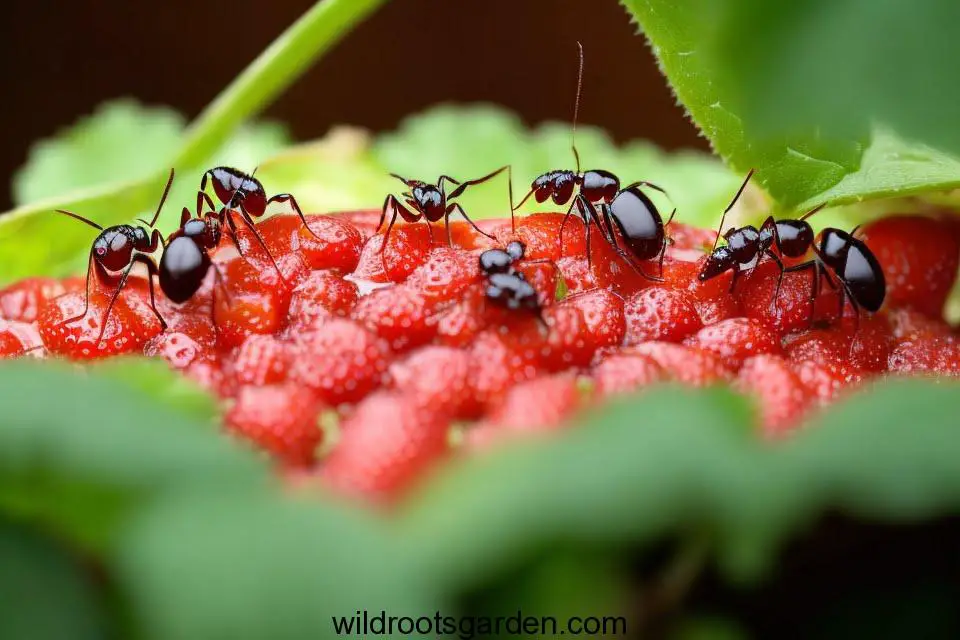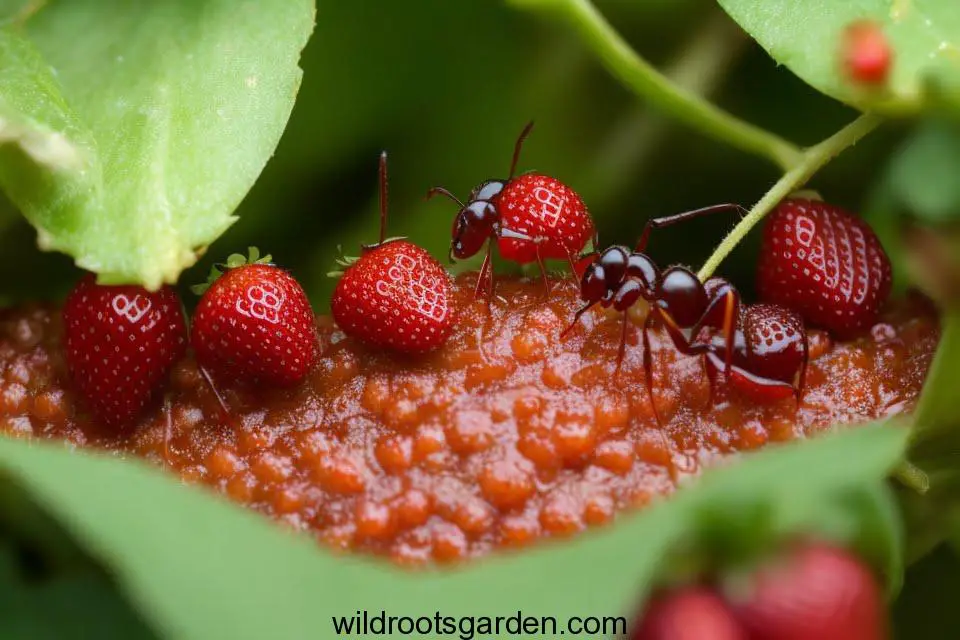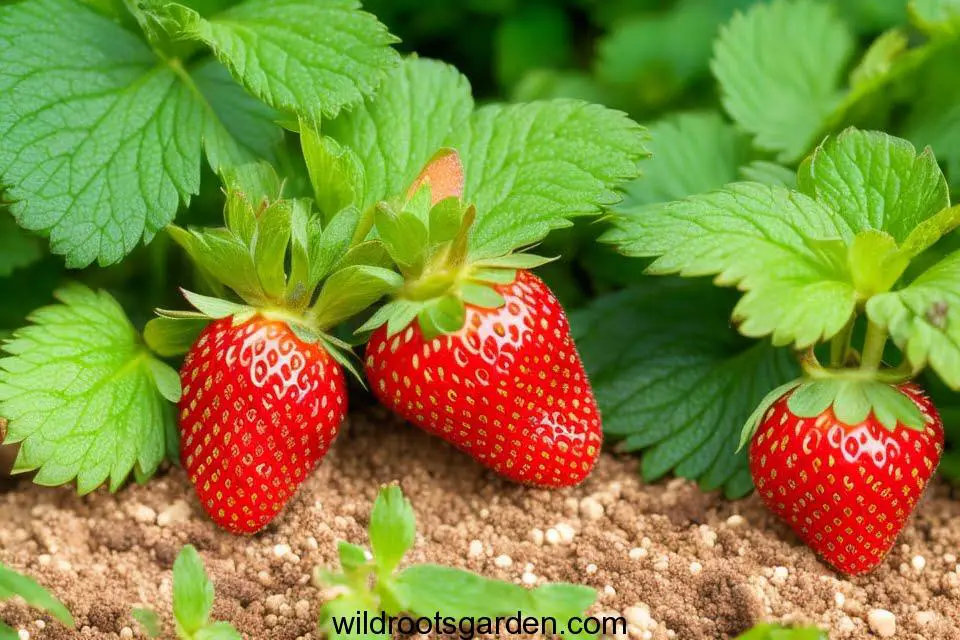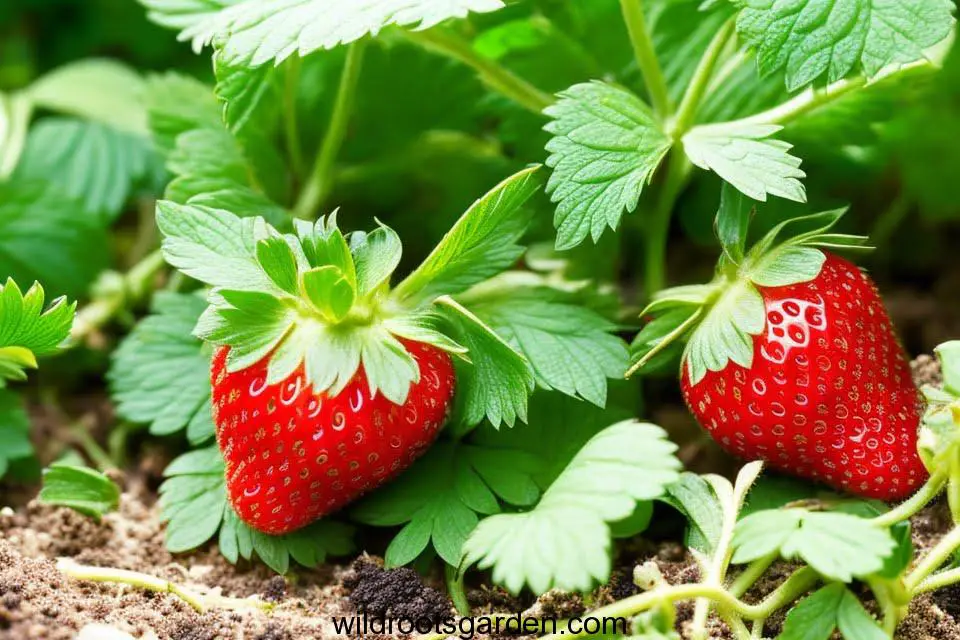Ants Are Eating My Strawberries. You’re not alone if you’ve ever looked forward to the pleasant taste of recently picked strawberries only to find them overrun and eaten by bothersome ants. Ants are a typical source of annoyance in gardens, particularly around fruits like strawberries. These minuscule critters can soon take over your plants and seriously harm your prized crop. But don’t worry! In this article, we’ll look at practical, environmentally friendly ways to keep ants out of your strawberry patch. Find out how to recover your strawberries and guarantee a plentiful and ant-free crop by learning about natural repellents and strategic planting methods.
The Impact of Ants on Strawberry Plants
Although ants may not harm strawberry plants directly, their presence can have harmful effects. By defending and breeding pests like aphids, which can harm your strawberry plants by eating their sap, ants can upset the delicate balance of your garden’s environment. Moreover, ants can harm strawberries’ appearance by tunneling into them, producing ugly holes and making the fruit unsellable or unpleasant for ingestion.

Natural Remedies to Deter Ants
- Cinnamon: Sprinkle the cinnamon powder around the base of your strawberry plants to repel ants. The strong aroma of cinnamon disrupts their pheromone trails, discouraging them from reaching the fruits.
- Vinegar: Create a solution of equal parts vinegar and water, and spray it on the areas where you notice ant activity. Vinegar masks the scent trails and repels ants effectively.
- Citrus Peel: Place citrus peels around your strawberry plants to deter ants. The strong smell of citrus is unpleasant for ants and can keep them at bay.
- Peppermint Oil: Mix a few drops of peppermint oil with water and spray it on the affected areas. The strong scent of peppermint acts as a natural ant repellent.
Creating Barriers Around Your Strawberry Plants
- Food-Grade Diatomaceous Earth: Sprinkle diatomaceous earth around your strawberry plants. The tiny particles in diatomaceous earth act as a physical barrier that dehydrates and kills ants.
- Copper Tape: Wrap copper tape around the containers or beds where your strawberries are planted. The electrical charge produced by copper repels ants and prevents them from crossing the barrier.
- Talcum Powder: Apply talcum powder in a thick line around your strawberry plants. The powder creates a barrier that ants find difficult to cross.
Using Organic Insecticides as a Solution
- Neem Oil: Dilute neem oil according to the instructions and spray it on the strawberry plants. Neem oil disrupts the life cycle of insects, including ants, and acts as an effective organic insecticide.
- Pyrethrin: Derived from chrysanthemum flowers, pyrethrin is a natural insecticide. Apply it carefully to the affected areas to control ants and other pests.
Removing Ant Trails and Nests
- Boiling Water: Locate ant trails and carefully pour boiling water over them. This method helps destroy the pheromone trails and eliminates ants’ nests.
- Boric Acid: Create a solution of boric acid and water, and apply it to the areas where ants are active. Ants carry the boric acid back to their nests, effectively eradicating the colonies.

Companion Planting to Repel Ants
- Mint: Plant mint near your strawberry plants. The strong scent of mint acts as a natural deterrent for ants.
- Marigold: Marigold flowers emit a strong odor that repels ants and other pests. Interplant marigolds with your strawberries to provide a natural barrier.
Attracting Natural Ant Predators
- Ladybugs: Encourage ladybugs to visit your garden by planting flowers that attract them, such as daisies and fennel. Ladybugs feed on aphids, which are often protected by ants.
- Birds: Attract birds to your garden by installing bird feeders and birdhouses. Birds, such as robins and sparrows, feed on ants and other insects.
Maintaining Clean and Tidy Garden Beds
- Remove Fallen Fruits: Regularly remove any fallen or overripe strawberries from the ground. These can attract ants and other pests.
- Clear Debris: Keep your garden beds free from debris, weeds, and excessive mulch, as they can provide shelter for ants and other pests.

Protecting Strawberries Indoors
- Greenhouse Cultivation: Consider growing strawberries in a greenhouse or enclosed structure. This method provides an isolated environment that prevents ants and other pests from reaching your plants.
- Indoor Containers: Grow strawberries in containers placed indoors. This strategy protects your plants from outdoor pests, including ants.
Preventing Future Infestations
Keep your garden clean, keep an eye on your strawberry plants frequently, and act quickly if you see any ant activity to avoid future ant infestations. By putting the above-mentioned tips into practice, you can reap a bumper crop of strawberries while keeping ants at bay.
Frequently Asked Questions (FAQs)
Q: Are ants harmful to strawberry plants?
A: While ants themselves may not harm strawberry plants, they can protect pests like aphids, which can damage your plants.
Q: Can ants tunnel into strawberries?
A: Yes, ants can tunnel into strawberries, leaving holes and rendering them unappealing for consumption.
Q: How can I repel ants naturally?
A: Natural repellents like cinnamon, vinegar, citrus peels, and peppermint oil can help deter ants from your strawberry plants.
Q: What is the best way to remove ant trails and nests?
A: Pouring boiling water over ant trails and using boric acid solutions are effective methods to eliminate ant nests.
Q: How can I attract natural ant predators to my garden?
A: Planting flowers that attract ladybugs and providing bird-friendly environments can encourage natural ant predators to visit your garden.
You can say goodbye to the constant ant invasions that threaten your strawberry crop by putting these tried-and-true methods into practice. Always remember that prevention is the key, so check your plants frequently and act quickly if you notice any ant activity. To prevent ant colonies from taking over your strawberry patch, use natural deterrents, erect physical barriers, and think about partner planting. You can reap the rewards of your labor without having to share it with obnoxious six-legged guests if you are persistent and patient. Accept these safety precautions, enjoy a flourishing strawberry garden, and enjoy the sweet benefits of your diligent effort. Enjoy your harvest!

